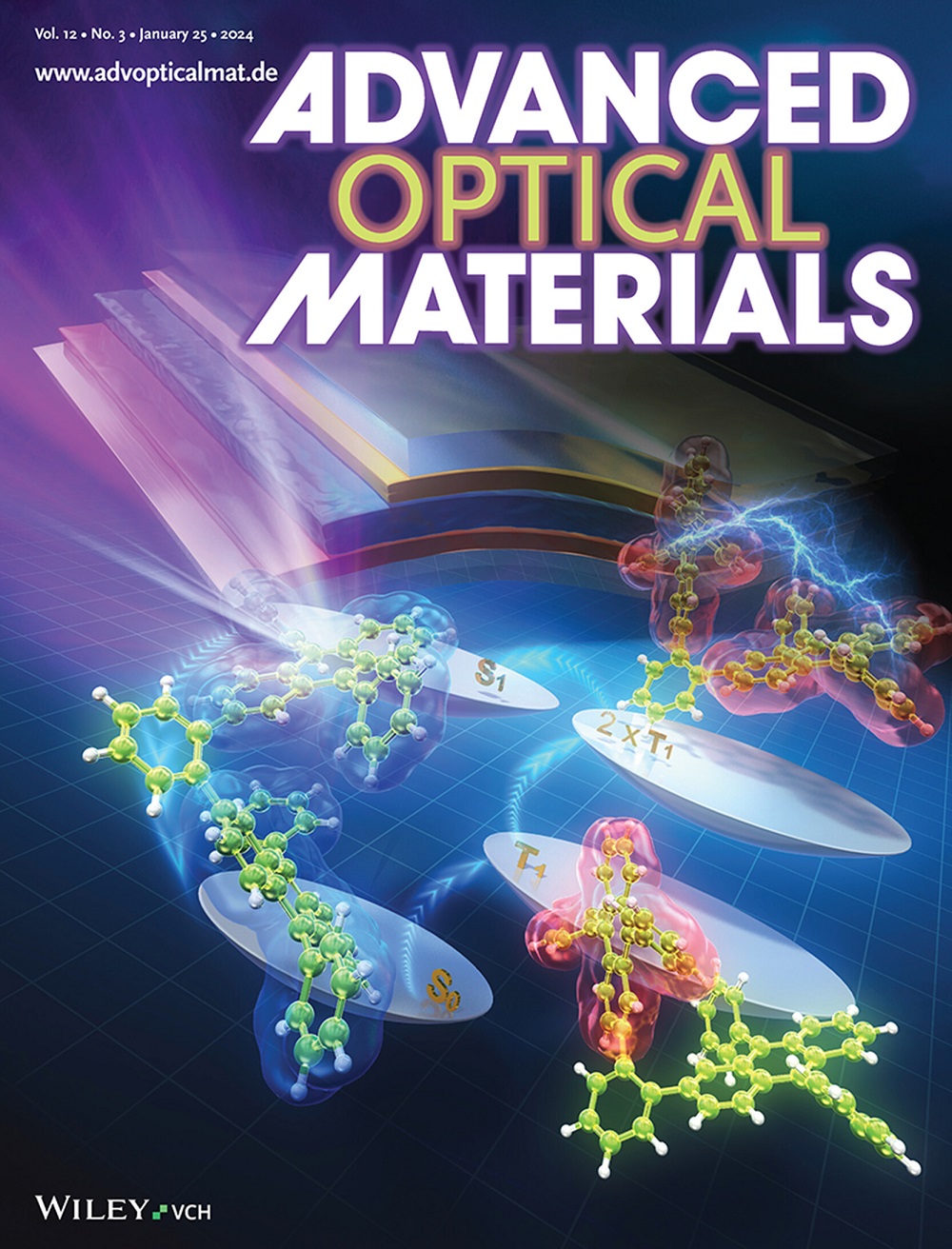Construction of Concentration Quenching‐Resistant Multi‐Resonance TADF Emitters via Positional Isomerization for OLEDs
IF 8
2区 材料科学
Q1 MATERIALS SCIENCE, MULTIDISCIPLINARY
引用次数: 0
Abstract
Multiple resonance thermally activated delayed fluorescence (MR‐TADF) emitters are promising for high‐definition organic light‐emitting diodes (OLEDs) due to their high exciton utilization and color purity. However, strong interchromophore interactions cause most MR‐TADF emitters with planar structures to aggregate at high doping concentrations, leading to degraded efficiencies. Herein, using benzenesulfonyl‐functionalized dibenzothiophene sulfoximine with steric effects, three MR‐TADF emitters (2SBN, 3SBN, and 4SBN) are synthesized by coupling the classic DtBuCzB skeleton at different sites. Three emitters exhibit green or blue‐green emission with full width at half maximum (FWHM) values less than 29 nm and photoluminescence quantum yields exceeding 90%. OLEDs based on 2SBN, 3SBN, and 4SBN achieve high maximum external quantum efficiency (EQE通过位置异构化构建用于有机发光二极管的抗浓度淬灭多共振 TADF 发射器
多重共振热激活延迟荧光(MR-TADF)发射器具有高激子利用率和色彩纯度,因此有望用于高清有机发光二极管(OLED)。然而,由于色团间的强相互作用,大多数具有平面结构的 MR-TADF 发射器在高掺杂浓度下会聚集在一起,导致效率降低。本文利用苯磺酰官能化二苯并噻吩亚磺酰亚胺的立体效应,通过在不同位点偶联经典的 DtBuCzB 骨架,合成了三种 MR-TADF 发射器(2SBN、3SBN 和 4SBN)。这三种发射体发出绿色或蓝绿色的光,其半最大全宽(FWHM)值小于 29 nm,光量子产率超过 90%。基于 2SBN、3SBN 和 4SBN 的有机发光二极管在 5 wt.% 掺杂浓度下的最大外部量子效率 (EQEmax) 分别达到 30.1%、27% 和 33.8%。值得注意的是,由于 4SBN 的扭曲构象和分子间相互作用受到抑制,当掺杂浓度为 20 wt.% 时,OLED 的 EQEmax 仍然高达 28.9%。这些结果证明了分子设计的可行性,即通过位置异构来调节空间构象,从而开发出减少浓度淬灭的 MR-TADF 发射器。
本文章由计算机程序翻译,如有差异,请以英文原文为准。
求助全文
约1分钟内获得全文
求助全文
来源期刊

Advanced Optical Materials
MATERIALS SCIENCE, MULTIDISCIPLINARY-OPTICS
CiteScore
13.70
自引率
6.70%
发文量
883
审稿时长
1.5 months
期刊介绍:
Advanced Optical Materials, part of the esteemed Advanced portfolio, is a unique materials science journal concentrating on all facets of light-matter interactions. For over a decade, it has been the preferred optical materials journal for significant discoveries in photonics, plasmonics, metamaterials, and more. The Advanced portfolio from Wiley is a collection of globally respected, high-impact journals that disseminate the best science from established and emerging researchers, aiding them in fulfilling their mission and amplifying the reach of their scientific discoveries.
 求助内容:
求助内容: 应助结果提醒方式:
应助结果提醒方式:


